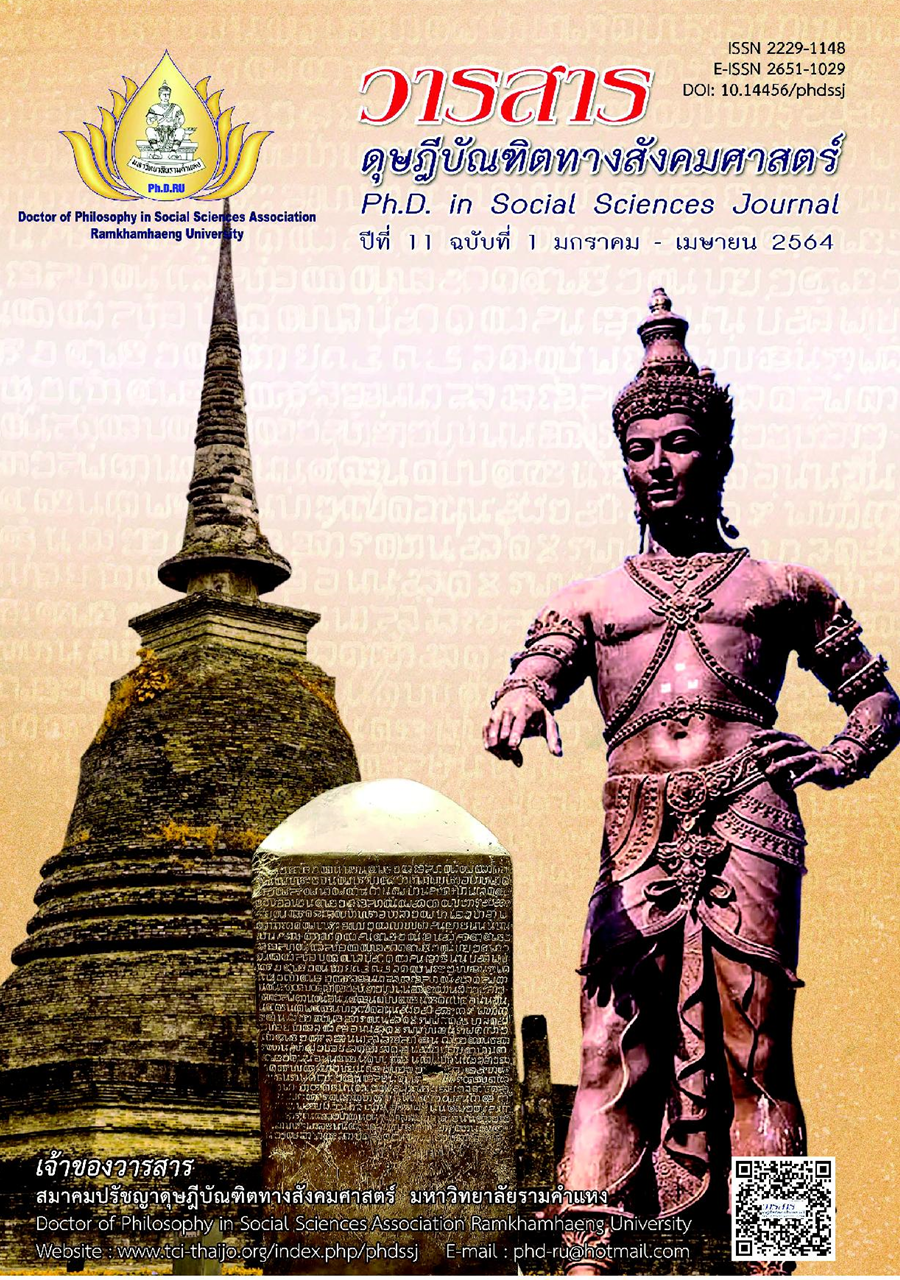The Causal Factors That Influence the Performance of Competition in the Road Freight Service Business Operators in Thailand
Main Article Content
Abstract
This research aimed : (1) to examine the consistency of the model and the empirical data of factors that influence the competitive performance and (2) to study factors that influence the competitive performance results of the road freight transport service business operators in Thailand by collecting data from 390 road freight transport service business operators in Thailand, and used the computer program to analyze the confirmatory component and structural equations (Structure Equation Model--SEM).
The research result found that (1)every index has passed the standard criteria p-value = 0.376, GFI = 0.976, AGFI = 0.963, CFI = 0.998, RMSEA = 0.011 and RMR = 0.021. This indicates that the results are consistent with empirical data and 2) from the route analysis it was found that the factors that influence the competitive performance of the road freight transport service business operators in Thailand consist of transformational leadership information, technology and business management strategy with a total influence of 0.550, 0.392 and 0.426, respectively, at statistical significance level of 0.01. These three factors jointly explain the competitive performance of the road freight transport service business operators in Thailand by 60.4 percent (R2 = 0.604). This research can be use and guideline for the competitive performance in the businesses of similar characteristics in creating competitive advantage to the business.
Article Details
Academic articles, research articles, and book reviews in the Ph.D. in Social Sciences Journal are author’s opinions, and not the publisher’s, and is not the responsibility of the Ph.D. in Social Sciences Journal Philosophy Association, Ramkhamhaeng University. (In the case that research is done on human, the researcher has to be trained in Ethics for Doing Research on Human Training and has to produce the evidence of the training).
References
Aaker, D. A. (1991). Managing brand equity: Capitalizing on the value of a brandname. Free Press.
Abdullah, N., & Yaakub, S. (2014). Reverse logistics: Pressure for adoption and the impact on firm’s Performance. International Journal of Business and Society, 15(1), 151-170.
Achua, C. F., & Lussier, R. N. (2010). Effective leadership. South-Western.
Angsuchoti, S., Wichitwanna,S., & Kunphinyopanuwat, R. (2014). Statistical analysis for research in social science and behavior science: techniques for using LISREL programs (3rd ed.). Charoen Munkong Dee. [In Thai]
Bunkwan, T., & Apisakul, A. (2012). Strategic management: Building and implement a strategy. McGraw-Hill. [In Thai].
Daugherty, P. J., Myers, M. B., & Richey, R. G. (2002). Information support for reverse logistics: The influence of relationship commitment. Journal of Business Logistics, 23(1), 85-107.
Department of Business Development. (2018). Number of Thai logistics service providers. Author. [In Thai].
Department of National Parks Logistics Division. (2019). Industrial logistics performance index: Key success factor. Author [In Thai].
Desai, D., Sahu, S., & Sinha, P. K. (2007). Role of dynamic capability and information technology in customer relationship management: A study of Indian companies. Vikalpa, 32(4), 45-59.
Duangphastra, C. (2017). Logistics management. McGraw-Hill. [In Thai].
Dutu, C. & Halmajan, H. (2011). The effect of organizational readiness on CRM and business performance. International Journal of Computers, 1(5), 106-114.
Field, A. (2005). Discovering statistics using SPSS (2nd ed.). Sage.
Frese, M. (2000). Success and failure of Mechlien Owners in Africa. Greenwood.
Gibson, M.. (1997). Nursing care of children (3rd ed.). Delmar.
Hair, J. F., Black, W. C., Babin, B. J., & Anderson, R. E. (2010). Multivariate data analysis: A global perspective. Prentice Hall.
Kasim, A. A., & Minai, B. (2009). Linking CRM strategy, customer performance measures and performance in the hotel industry. International Journal of Economics and Management, 3 (2), 297-316.
Laudon, K, C. & Laudon, J, P. (2015). Management Information technology. Prentice Hall.
Porter, M. E. (1980). Competitive strategy: Techniques for analyzing industries and competitors. Free Press.
Queiroz, J. P., & Oliveira, B. (2014). Benefits of the marketing information system in the clothing retail business. Journal of Information Systems and Technology Management, 11(1), 153-168.
Saglietto, L. (2013). Towards a classification of fourth party logistics (4PL). Universal Journal of Industrial and Business Management, 1(3), 104-116.
Silva, L. M. da., & Neto, J. S. (2014). Method for measuring the alignment between information technology strategic planning and actions of information technology governance. Journal of Information Systems and Technology Management, 11(1), 131-152.
Thai, V. V., Cahoon, S., & Tran, H. T.. (2011). Skill requirements for logistics professionals: Findings and implications. Asia Pacific Journal of Marketing and Logistics, 23(4), 553-574.
Theppitak, T. (2012). Readiness and adaptation of Thai logistics service branches towards the liberalization of trade in transport services by SMEs trucks. Burapha University, Faculty of Logistics. [In Thai]
Vonginta, T., Kuntasaat, A., & Charoensuk, G. (2018). Truck fleet and vehicle routing management by using the concept of integer linear programming with a case study of liquid product. Journal of Transportation and Logistics,11(1), 99-116. [In Thai]
Waldman, S. (2006). Stakeholder theory. Retrieved form http://www.csr-thai.blogspot.com [In Thai]
Yukl, G. A. (2010). Leadership in organizations (7th ed.). Prentice Hall.


